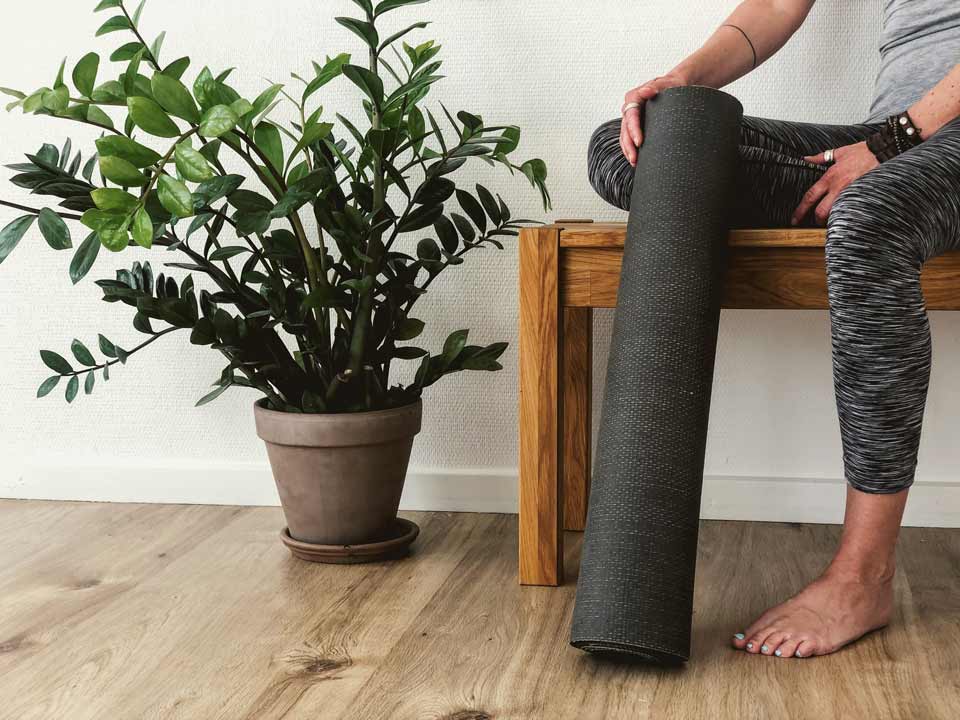Kegel exercises for women can aid in strengthening the muscles of the uterus, bladder, and gut (larger intestine). Men and women who have issues with bowel control or urine leaks might benefit from their assistance. These issues might be affecting you:
- Getting older
- You’ll eat more
- After gynecologic surgery
- After prostatic surgery (men)
Urine leaks and bowel control issues are common in individuals with brain and nerve illnesses.
You may perform kegel exercises while sitting or lying down at any moment. You may carry them out while eating, working at a desk, driving, relaxing, or watching tv.
Table of contents:
- What is Kegel exercise?
- What happens if a prolapse of the pelvic organs takes place?
- The purpose of Kegel exercises
- Identifying the female pelvic floor muscles
- Benefits of Kegel exercises for women
- Female kegels routine
- How to tighten the vagina?
- Pelvic thrust
- Bridge hold
- Weighted squats
- Advices
- Conclusion


What is Kegel exercise?
Kegel exercises are easy tense-up and release movements you may perform to strengthen the pelvic floor muscles. The Kegel exercises were developed by American gynaecologist Arnold Kegel as non-surgical treatments for urine incontinence caused by weak or slack perineal muscles.
Your genitalia is located in your pelvis, the region between your hips.
The pelvic floor consists of several muscles and tissues that come together to create a sling at the base of the pelvis. Your organs are held in position by this sling. The difficulty in regulating your bowels or bladder is one problem that can result from a weak pelvic floor.
When you master and know how to do Kegels, you may perform them anytime, anywhere, whether in the comfort of your bedroom or line at the supermarket.
Kegel exercises will not only help you stop pee leakage, but they can also help you stop unintentionally releasing gas or stool and might even aid your orgasms. Maintaining the “fitness” of these kegel exercises is what muscles prevent your uterus, bladder, and intestines from drooping into the vagina. Pelvic organ prolapse is the disorder that results from this.
What happens if a prolapse of the pelvic organs takes place?
Both urinary and fecal incontinence, disorders characterised by the leakage of faeces or stool, may occur as a result of pelvic organ prolapse. Additionally, your vagina may end up losing its sexual sensitivity.


What initially triggers the development of pelvic organ prolapse?
Pelvic organ prolapse can be caused by health issues that strain your pelvic floor muscles and weaken them. These consist of:
- Both pregnancy and vaginal delivery.
- Becoming overweight or gaining weight.
- Involves a caesarean section (“C-section”) and pelvic surgery.
- Genetics: Some people are genetically predisposed to weakening the tissues supporting the pelvic floor muscles more than others.
- Natural aging process: As you age, your pelvic floor muscles, rectum muscles, and anus muscles all deteriorate. Also weakened by oestrogen loss are the muscles in this region.
- Continuous episodes of coughing, sneezing and giggling.
- Exercise, particularly “unsettling” exercises like leaping, jogging, and heavy weightlifting, as well as sporting activities.


The purpose of Kegel exercises
Let’s look at kegel exercises and what to expect. Essentially, Kegel exercises are beneficial for both sexes.
Women’s pelvic floors might become weaker for various reasons, including pregnancy, childbirth, age, and weight increase.
The pelvic floor muscles support the uterus, the urinary system, and the bowels. Such pelvic organs may descend into a woman’s genitals if the muscles are weakened. This can lead to urine incontinence in addition to being exceedingly unpleasant.
Men’s pelvic floor muscles may also start to deteriorate as they age. This can result in faecal and urine leakage, particularly in men undergoing prostate surgery.


Identifying the female pelvic floor muscles
Finding the appropriate group of muscles when you first begin pelvic floor exercises for women might be challenging. Inserting a cleansed finger into your vagina and contracting your vaginal walls around it is one method of locating them.
You can also find the muscles by attempting to halt the flow of your pee. Your pelvic floor contraction muscles are what you employ for this activity. Get used to the sensations of contracting and relaxing.
While you have a full bladder, it is not a good idea to often perform Kegel exercises or to constantly interrupt your urination. Your chance of developing a urinary tract infection might increase if your bladder isn’t completely emptied (UTI). Nonetheless, you should just utilize this technique to learn.
If you are still unsure whether you have discovered the proper muscles, consult your doctor. They could advise using something called a vaginal cone. A vaginal cone is inserted inside the vagina, and it is held in place by the muscles of the pelvic floor.
It can be quite helpful to identify and separate your pelvic floor muscles using biofeedback training.
In this operation, a health care professional will place sticky electrodes on the exterior of your vagina or anus or implant a tiny probe within your vagina. You will be required to attempt a Kegel. The right muscles you used to contract will be displayed on a screen.


Benefits of Kegel exercises for women
Kegel exercises should always be performed with an empty bladder. You will discover that you can do them anyplace as you practice. Create a calm, secluded spot to sit or lay on the floor before performing your exercises as a beginning.
When beginning Kegel exercises, contract your pelvic floor muscles for three counts, then release them for three counts. Continue until you have completed ten repetitions. Practice within the next days until you can maintain tension in your muscles for 10 seconds. Every day, you should aim to complete three sets of 10 repetitions.
If you don’t get the outcomes you desire right away, don’t give up. Urinary incontinence may take several months to improve with kegel exercises.
Each person experiences them differently as well. In some persons, bladder continence and muscular control have significantly improved. Female Kegels, however, could stop your issue from growing worse.
Female kegels routine
Let’s talk about how to do kegel exercises. You must do female Kegel exercises three times daily once you have experienced the movement.
- Before you sit or lie down, ensure your bladder is empty.
- Your pelvic floor muscles should be tense. Hold firmly for 3 to 5 seconds.
- Count from 3 to 5 seconds while relaxing your female kegel muscles.
- Ten times, three times daily (AM, noon, and PM).
While performing these exercises, take a few deep breaths and ease your body. Help ensure that your chest, thigh, butt, or stomach muscles are not tense.
You would do well to feel better and experience fewer symptoms after 4 to 6 weeks. Continue your workout regimen but don’t do more of them. When you abuse it, you may have straining when urinating or making bowel movements.


How to tighten the vagina?
With these three effective workouts, you may naturally tighten your vagina and have fantastic sex.
Can you actually tighten a fairly loose vagina? The fact of the matter is that you can benefit from some workouts. You might just have a loose vagina for a number of reasons. One factor that might cause pelvic muscle weakness is childbirth.
Along with lowering your sexual pleasure, this can also cause excruciating pain and other issues, including urinary incontinence. It is thus time to begin doing all those vagina tightening exercises immediately.
Regular pelvic exercises can enhance sexual arousal, particularly after childbirth. And what’s this? According to a study, you only have to tighten your vagina for eight weeks.
Ladies, are you ready to learn about the best exercises for vaginal tightening?
The pelvic muscles may be strengthened by performing the following great vaginal exercises:
Pelvic thrust
Among the most popular and basic workouts, you may perform the pelvic thrust. It includes thrusting of the pelvic area, as the name would imply. In this instance, you rest your upper body on a platform, apply some pressure to the lower abdomen region with resistance bands or weighted plates, and start moving your lower body vertically and horizontally.
Your core is engaged as a result of the added weight on your abdomen, which tones the pelvic area.
The pelvic strength required for movement aids in the contracting and relaxing of the muscles of the pelvic floor, hence assisting with making the vagina tighter.
Bridge hold
This is how to try to tighten a woman’s vagina according to yoga. You might think of it as a plank exercise for your pelvic floor. Simply lie in the bridge stance, contract your butt and lower abdomen, and maintain balance.
Your pelvic area will become more active the longer you keep this posture, which will eventually cause your vagina to constrict.
Weighted squats
Weighted squats contribute to strengthening the pelvic floor muscles in addition to giving you a fuller butt. But keep in mind that in order to make weighted squats particularly effective for tightening your vagina, you must apply pressure to the pelvic area.
The motion is the key to how to tighten vagina walls. Such exercises cause the pelvic floor muscular contractions and relaxation to their fullest extent as they travel up and down. And that quickly results in vaginal tightness.
Ladies, however, you may only perform these exercises once you have fully recovered from your pregnancy. Otherwise, it will place undue strain on a delicate and susceptible area, leading to further pelvic problems.
Here are several warnings:
Once you master them, avoid performing Kegel exercises more than twice per month when you are peeing. Over time, performing the exercises whilst also peeing might impair your pelvic floor muscles and harm your kidneys as well as your bladder.
Women’s vaginal muscles may contract excessively if they perform Kegel exercises improperly or with far too much effort. While having a sexual encounter, this could hurt.
If you stop performing these workouts, incontinence will reappear. Once you begin, you might have to continue doing them for your entire life.
Once you begin performing these exercises, it can take several weeks for the incontinence to become better.


Advices
After performing Kegel exercises, if your back or abdominal hurt, you’re not performing properly, always keep in mind that your abdominal, back, butt, and side muscles should stay relaxed even while you tighten your pelvic floor muscles.
Last but not least, don’t abuse the Kegel exercises. Overworking the muscles will make them exhausted and therefore unfit to perform their essential duties.
Conclusion
Exercises for the kegel are simple, risk-free, and cost-free to attempt. What exactly do you stand to lose?
If you think Kegel exercises could be a good match for you, talk to your doctor. You might be able to achieve better urine control and avoid untimely ejaculation by including multiple sets into your daily regimen.
Your doctor may advise you to integrate Kegel exercises with additional therapies, such as medicine or bladder strength and conditioning, in certain circumstances.
You may also be interested in:
